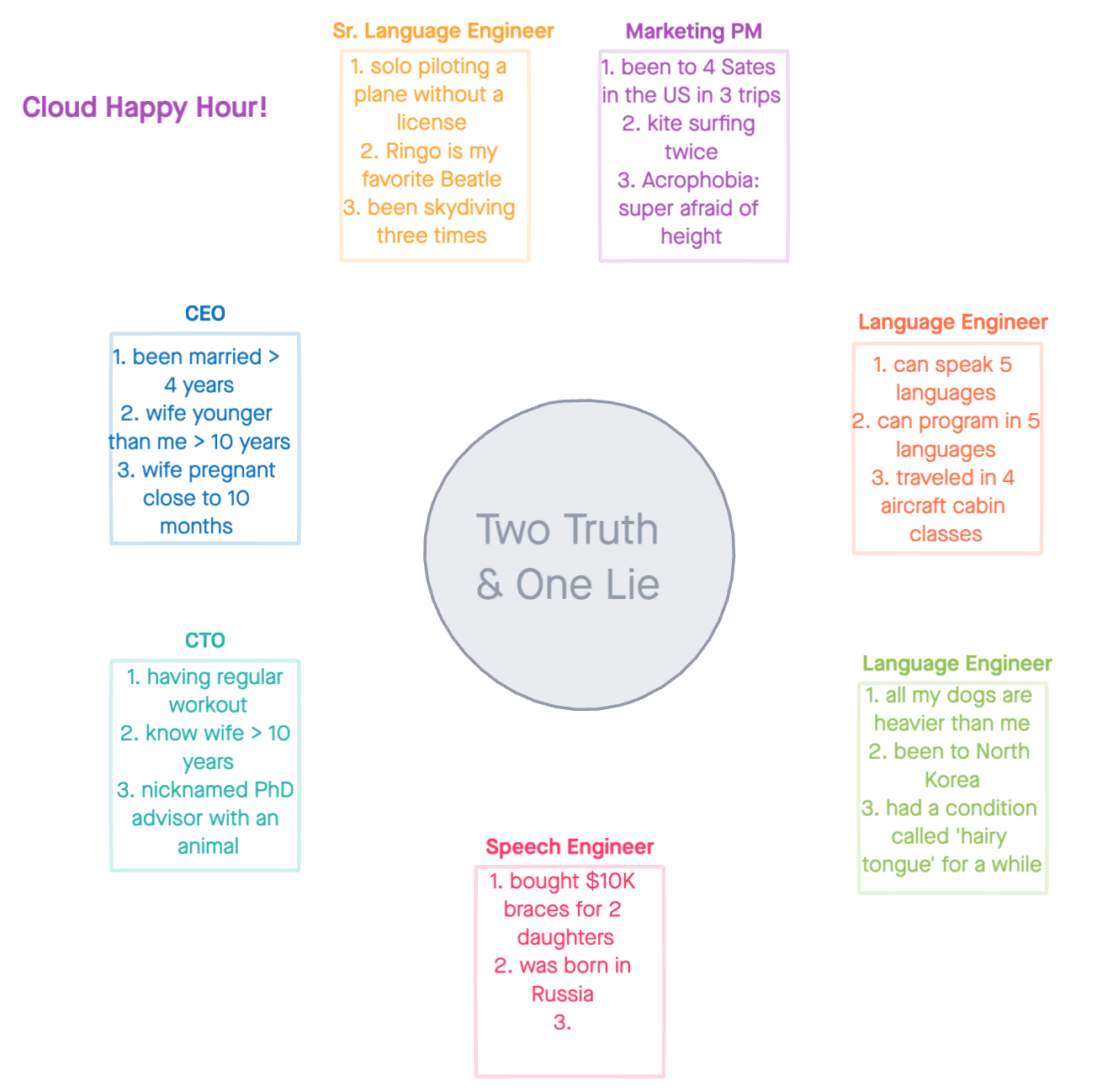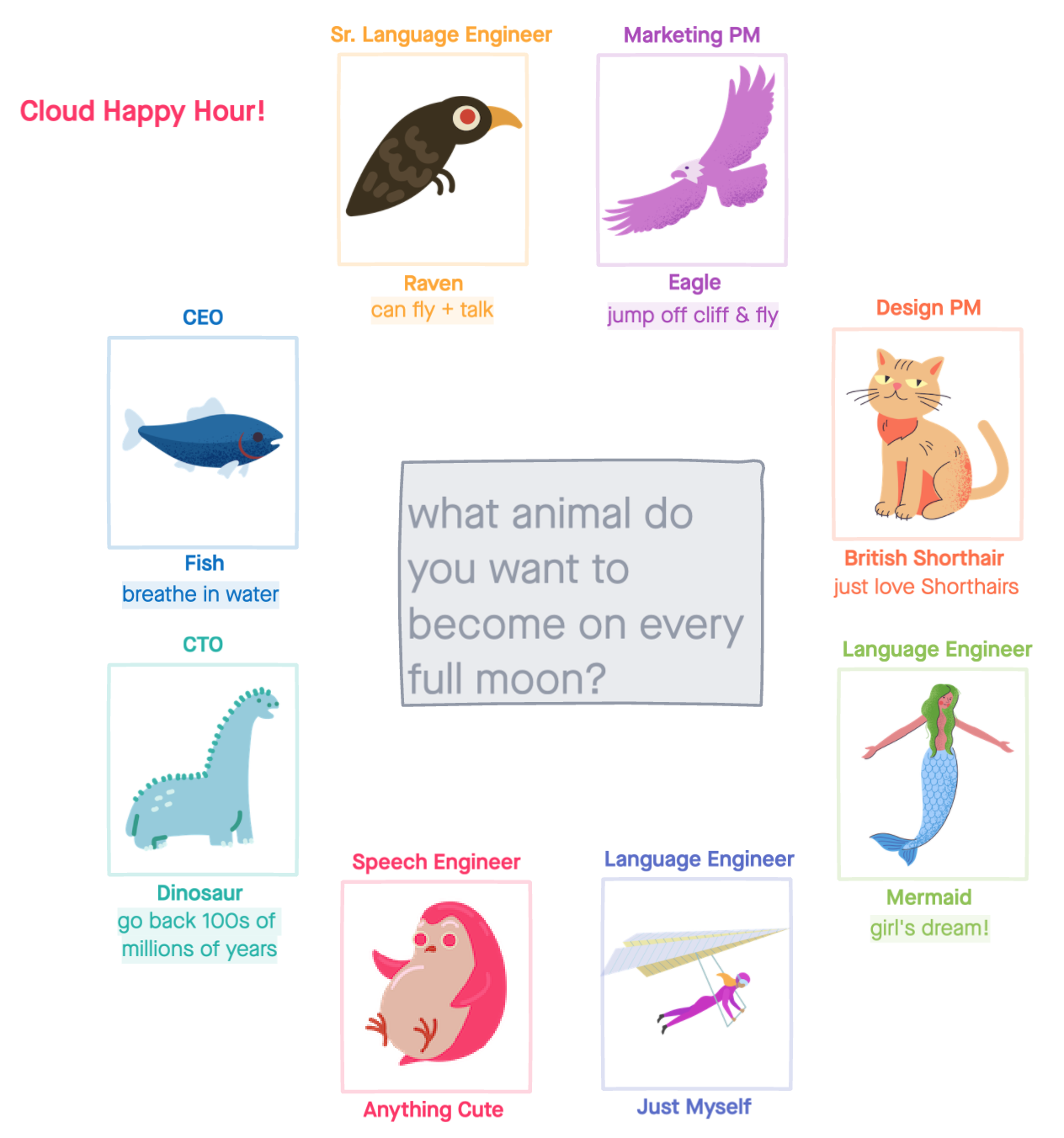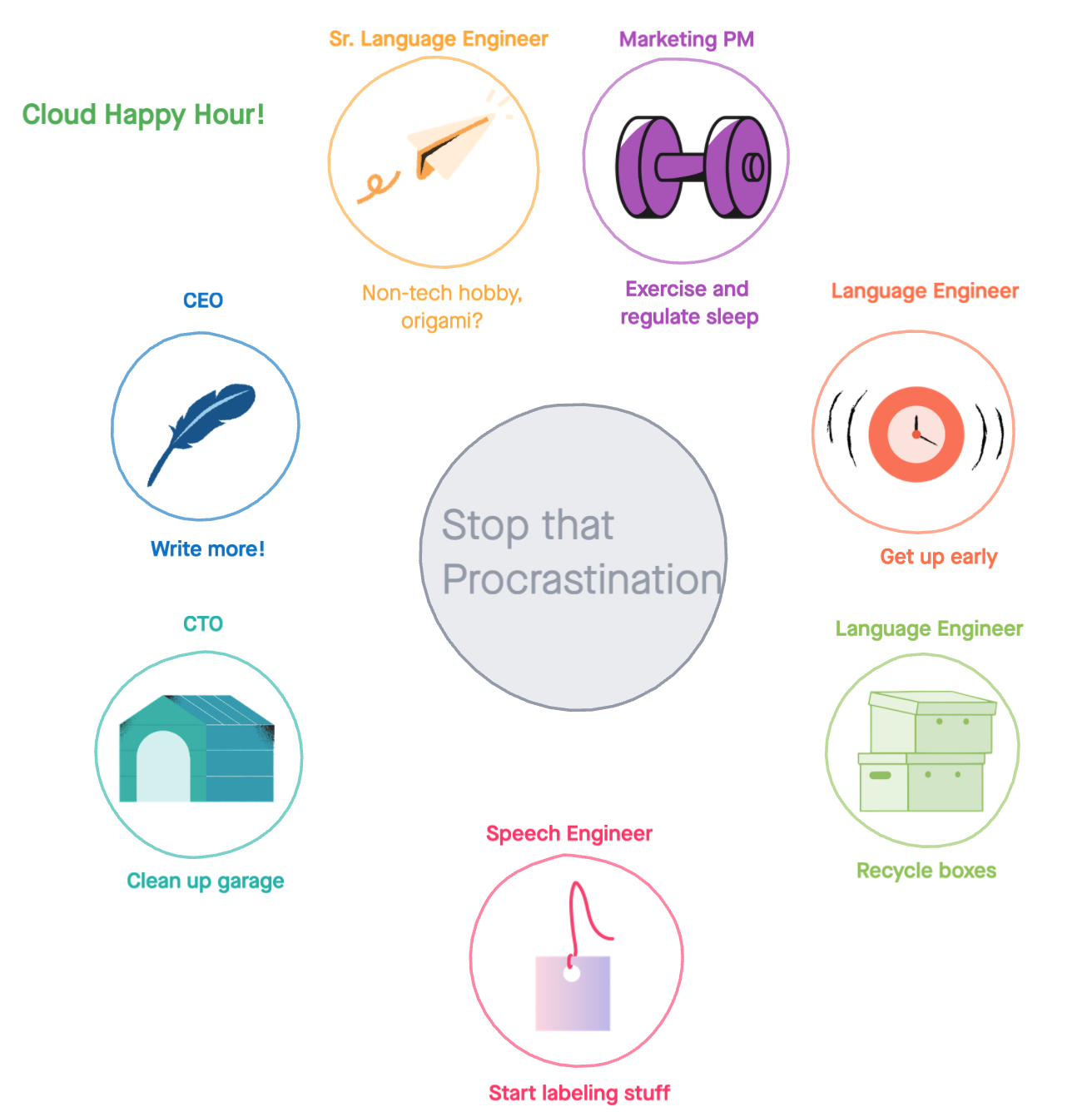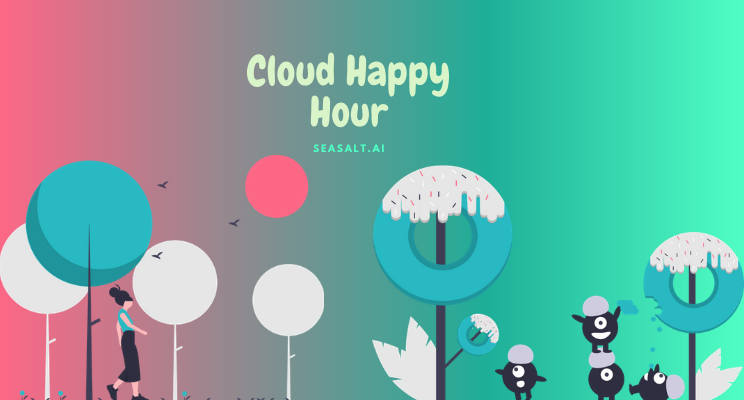Seasalt.ai, a Conversational AI consulting startup, is built during the COVID-19 pandemic: we hired the first employee in March 2020 and most team members have never met each face to face. Besides running regular Scrum-based sprints, we organize cloud happy hours every Friday. The co-founders will buy everyone lunch and we hang out on Google Meet.
The first Happy Hour was all about “who ordered what”, commenting on each other’s half-finished 🍛 🥡🥘🍲 🍜🥪🌮🌯🍔🍝🥟🍚 and how absurd the delivery apps charged for service AND delivery AND tips.
(Fun fact: our marketing product manager makes Fridays “Ramen Day” for him and I accidentally found out that April 4 is Ramen Noodle Day 🍜.)
Oops, we didn’t mean to run Happy Hours like this
Then patterns quickly showed up in subsequent happy hours:
-
80/20 rule: 80% of talk is done by 20% of folks.
-
Fallback to Netflix: If we run out of topics, people will just talk about recent Netflix shows. Those who don’t watch Netflix would just work on their lunch and smile.
(Fun fact: as a team of at least 5 Computational Linguists, we talked about training a “small talk bot” using the almighty OpenAI GPT-3 when we run out of topics.)
That got me to thinking:
How do we create an equal chance for people to participate actively?
- Go Round-robin without being obvious about it.
- Ask them interesting questions so they need to think before answering.
How do we get to know people better to build a trust-based team culture?
- Encourage people to share something personal.
- Self-disclosure is a conversation starter.
(Fun fact: self-disclosure is a very useful dialogue technique to earn human trust in human-computer conversations, i.e. chatbot)
Happy Hour Ideas
So we devised a few talking games for our cloud happy hours, and go round-robin about it with each team member. Usually, the team leader will start. The following is my favorite team-building ice-breaker.
Two Truth and One Lie
State 2 truth and 1 lie about yourself and let everyone guess
The following is a mockup of “who shared what”:

Wow! All of a sudden we knew so much about others! When our Marketing PM spoke up about his worry of no flight to safely travel back to India, we joked about asking our Senior NLP engineer, an unlicensed pilot, to fly him across the Pacific Ocean.
Remote work inevitably deprived us of the chance to work side by side and know your colleague better. However, we can create such opportunities with targeted happy hour questions.
Getting to know a colleague personally is a foundation of building team trust.
Show Your Imagination
Folks loved the “2 truth and 1 lie” game. In the next happy hour, one teammate volunteered a game:
What animal do you want to become on every full moon?

Well, that question was a lot of fun! This is not sharing something you have, but something you want, even without the chance to realize it. It turns out some answers come out of fear:
- Our acrophobic PM wants to be able to fly
- With two-time drowning experience, the CEO wants to breathe in water
Some answers come out of a certain desired attribute:
- awesome: raven
- adorable: shorthair, mermaid, anything cute
- curiosity: dinosaur
Just like that everyone has a dream to obtain a superpower, everyone also has a dream to morph into another animal.
(Fun fact: from skeuomorphism to neumorphism, humans have reflected their dreams of morphism in UI design.)
Stop That Procrastination
Our “darkest” happy hour was around a topic raised by a team member: what do you hate the most about yourself? Well, the original topic was: can you describe some of your best/worst experience? But someone spun it a bit … ;-)
I did not draw a mockup for this. But the most common one was: procrastination! So we dedicated one happy hour to talk about it. Also, some teammates volunteered to share some readings on GTD (Getting Things Done) and MIT (Most Import Things).

Discussions were around both stopping procrastination and starting a new habit. We accidentally discovered some side effects of remote work:
- People are not obligated to show up in the office so some have trouble getting up on time in the morning.
- With more time staying at home, keep it tidy and organized becomes impossible.
Well, we appreciated the “confession” and drew a mockup dashboard to monitor everyone to start doing the things they should have started a million years ago.
By showing what’s vulnerable about one’s willpower, we showed and built greater team trust.
The consensus? Knowing each other’s weakness is as important as knowing their strengths.
What We Learned
So far in the summer of 2020, we have had 8 Cloud Happy Hours. Here are what we learned from past experience:
- Cloud Happy Hours come with “personalized food recommendation": you can always order your favorite food and don’t need to make compromises on restaurant choices when going out physically with a group of people.
- Cloud Happy Hours maximizes communication clarity: especially when you are not in a noisy restaurant and everyone can hear each other clearly, i.e., strong SNR (Signal-to-Noise Ratio).
- Cloud Happy Hours need to be moderately moderated to bring the best benefit to team building.
- Round robin is an effective way to encourage team participation if you can do it implicitly (hint: design a compelling game).
- Ask interesting questions, encourage people to think before answering, and you will get captivating discussion and a happy hour in return.
I cannot wait to tell you more about the fun topics of future Seasalt.ai Cloud Happy Hours. Please let me know the great ideas you have about running your own virtual Happy Hours!


 Subscribe
Subscribe